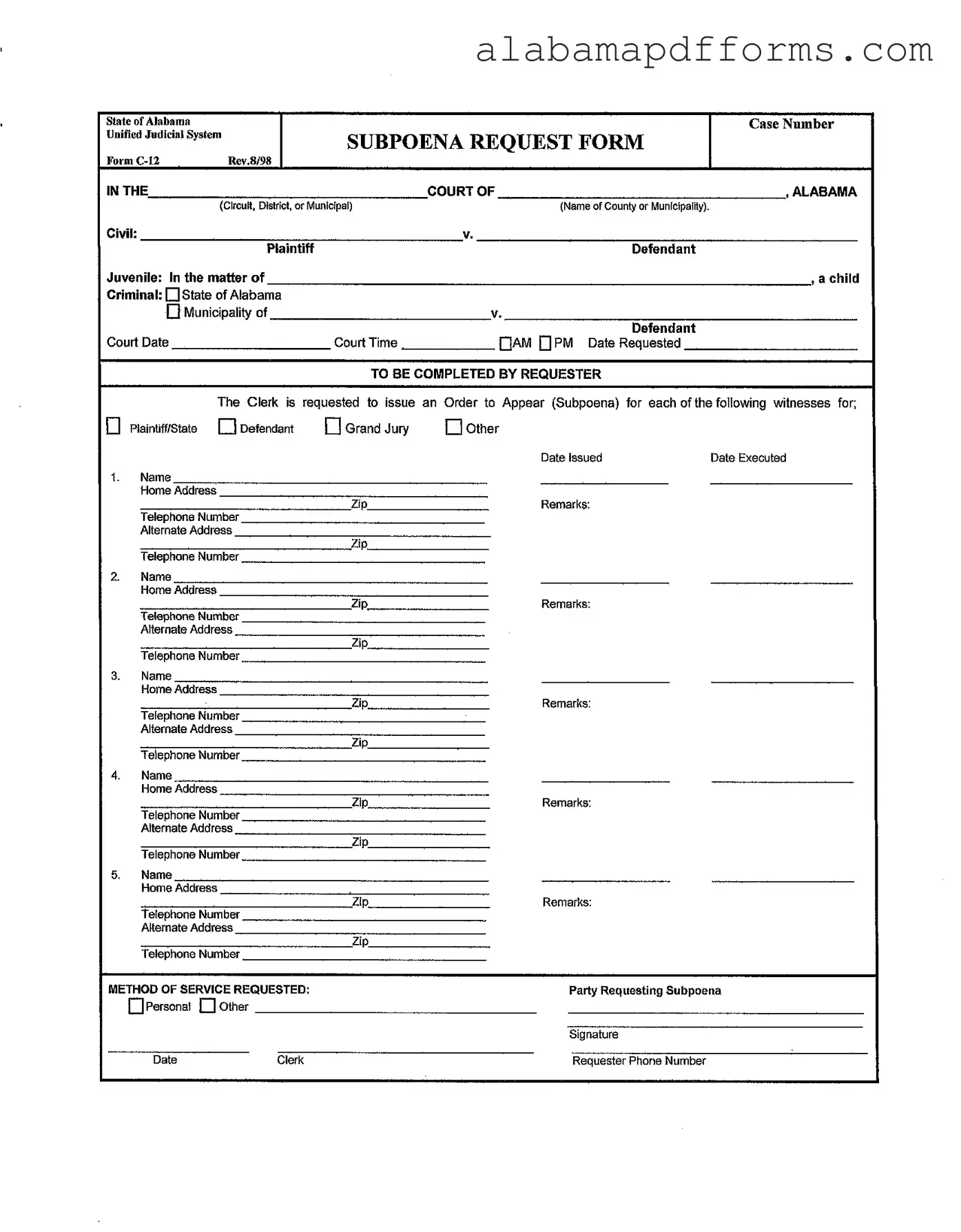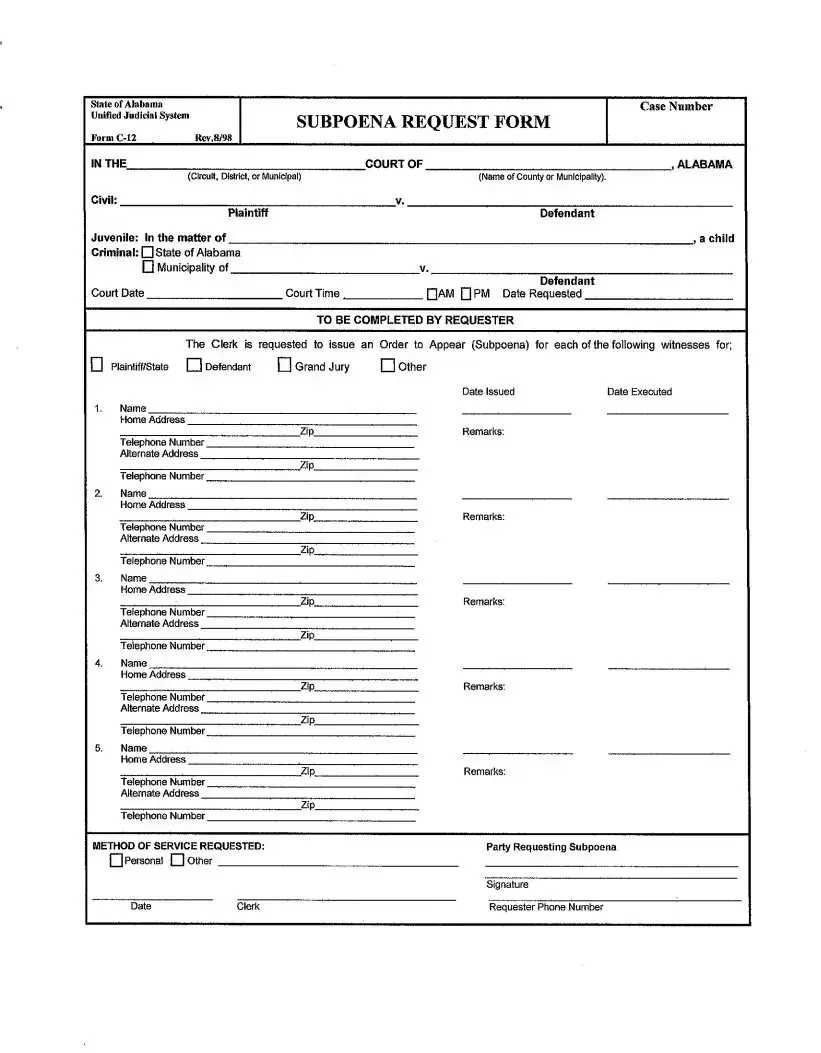Filling out the Alabama C 12 form requires careful attention to detail. One common mistake is failing to provide complete information for each witness. Each witness entry should include the name, home address, and telephone number. Omitting any of these details can lead to delays in processing the subpoena.
Another frequent error is not specifying the correct case number. The case number is critical for identifying the specific legal matter associated with the subpoena. If the case number is incorrect or missing, it may result in confusion and hinder the issuance of the subpoena.
People often neglect to check the appropriate court designation. The form requires the requester to indicate whether the case is in Circuit, District, or Municipal Court. Failing to select the correct court can lead to jurisdictional issues and complications in the legal process.
Providing inaccurate or outdated contact information for witnesses is also a common mistake. It is essential to ensure that the telephone numbers and addresses are current. Incorrect information can prevent the subpoena from being served effectively.
Some individuals forget to include remarks that may clarify the context or purpose of the subpoena. This section can be useful for additional notes or instructions regarding the witnesses. Leaving this section blank may lead to misunderstandings.
Additionally, individuals sometimes overlook the section for the method of service requested. The form allows for different methods, such as personal service. Not indicating a preferred method can result in delays or improper service.
Another mistake is failing to sign the form. The requester’s signature is necessary to validate the request for the subpoena. Without a signature, the form may be considered incomplete and returned for correction.
People may also misinterpret the section regarding the alternate address. Providing an alternate address is optional, but if included, it must be accurate. Misleading information can complicate the service process.
Lastly, individuals might submit the form without verifying all entries for accuracy. A thorough review can catch errors that may otherwise lead to complications. Ensuring that all information is correct before submission is crucial for a smooth process.

